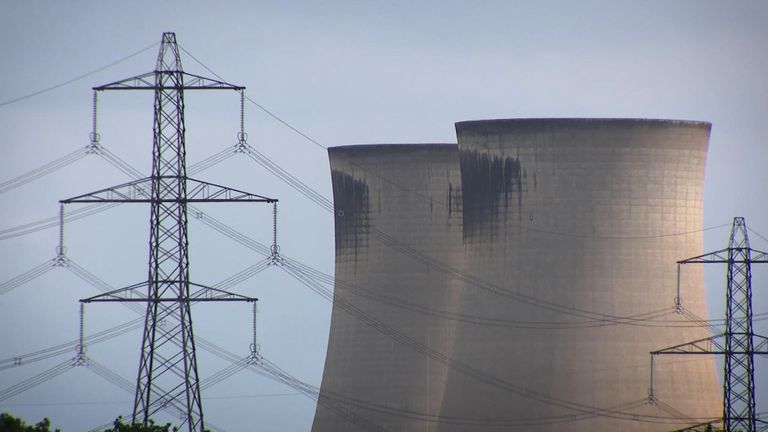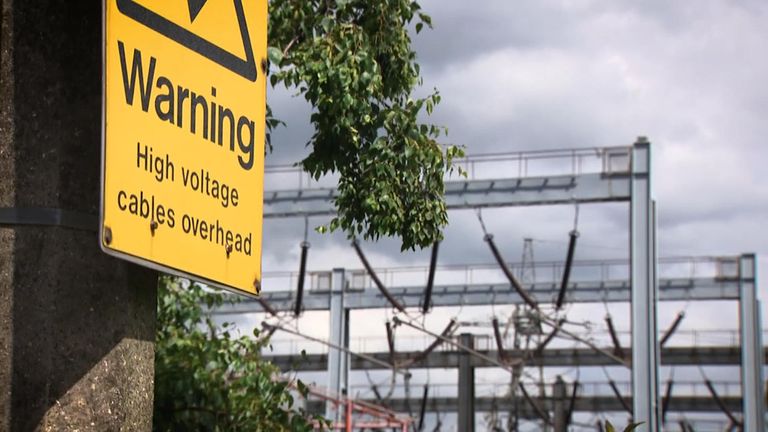Zero-carbon electricity outstrips fossil fuels for first time
Britain has passed a milestone on the path to climate change-friendly electricity.
For the first time since before the Industrial Revolution, the National Grid says more electricity is being generated from zero-carbon sources such as solar, wind and hydro power than from fossil fuels.
The Drax power station in North Yorkshire has converted two-thirds of its site to generating electricity using low carbon biomass – which is basically wood pellets – instead of coal.
It used to be the biggest coal fired power station in western Europe but Drax is now the biggest renewable power generator in the UK. It generates enough renewable electricity for four million households a year. And ultimately it wants to become a negative emissions power station.
Andy Koss, chief executive for Generation, Drax Group, told me they had to transform to survive.
He said: “If you look around the UK coal plants are closing.
“We see a bright future ahead of us looking at carbon capture and storage technology as another potential opportunity to extend the life of the plant. If we were still here reliant on coal we’d be in a very difficult position.
“A lot of what we did was innovative and culturally for all the people that work here and live in the area we’ve had to take them on that journey too.”
In the past 10 years, Britain’s annual generation of electricity from coal has decreased from 30% to 3% and energy generated by wind has increased from 1% to 19%.
And solar energy has increased from nothing to 4%.
The National Grid has also turned to neighbouring countries to access renewables, using underwater cables to plug Britain into Norway’s hydro network.
By 2030, the National Grid will have at least six so-called interconnectors operating in Britain, through which 90% of electricity imported will be from zero-carbon sources.
By 2025, the National Grid’s interconnectors will provide enough energy to power eight million homes via zero-carbon sources. This network of European sub-sea, clean energy super-highways will help to reduce Britain’s carbon emissions from the power sector by approximately 17% (six million tonnes) by 2030.
The world’s longest interconnector at 720km is being painstakingly laid between Blyth in Northumberland and the Blasjo reservoir in Kvilldal, where the biggest hydro power plant in northern Europe sits amongst Norway’s fjords.
When the team of hundreds of engineers from National Grid and Statnett, the operator of Norway’s power grid, complete construction in 2021, the interconnector will enable both countries to share zero-carbon electricity more efficiently, accelerating Britain and Norway’s progress towards a net zero emissions target.
But many campaigners argue not all renewables are saviours of the environment – raising concerns over biomass.
Gareth Redmond-King, UK head of climate at WWF, said: “The problem with that is that unlike those other forms, that does cause emissions.
“So we need to be clear that the only way we can use biomass is either if we’re releasing less by way of emissions than those trees would be storing if they were left in the ground, or if we’re able to capture and store that carbon underground.
“And we don’t yet have that technology at scale and we do need that technology before we can use to any sort of use of biomass so at the moment biomass is not really the most sustainable alternative.
“That’s why solar and wind are certainly preferable.”
Source: Read Full Article






